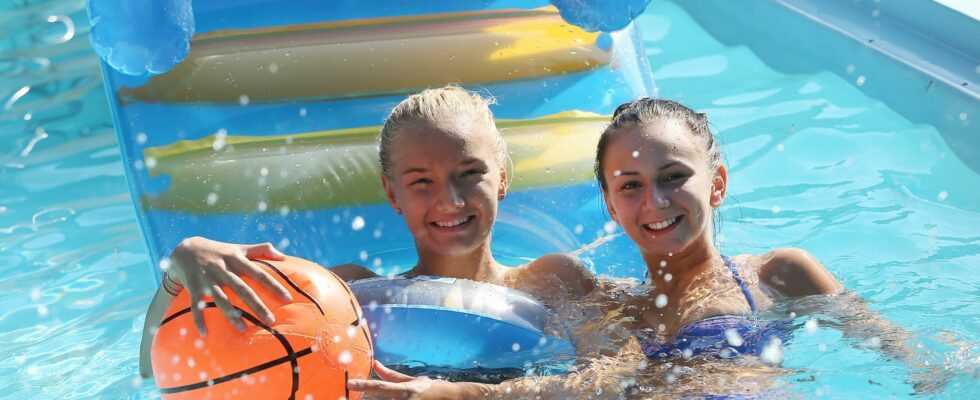Aerial photo evaluations of the state show: There are already around 50,000 private pools in Styria for wet fun. Before the first days of summer, these swimming pools are traditionally brought out of hibernation and (often simultaneously) filled – this requires a quantity of 1.5 billion liters of drinking water.
The number of private swimming pools used to be a big unknown because the statutory reporting and permit requirements are often not complied with. In order to increase planning for the drinking water suppliers, the state councilor for sustainability Hans Seitinger (ÖVP, picture below) was commissioned by aerial photographs from the years 2017 to 2020 to determine how many pools are now in the Styrian municipalities. The result: Exactly 48,328 pools with an average size of 29 m³ were identified. For the whole of Styria, this means a gigantic water requirement of 1.5 billion liters of drinking water. The “unreported number” is likely to be even higher due to the corona pandemic.Where the most and the fewest pools areOf the 286 Styrian municipalities, Haselsdorf-Tobelbad has the most lifeguards. The 1515 residents own 199 pools – that’s more than 13 percent! Lebring-St. follows with 11.3 percent. Margarethen in second place (249 pools, 2200 inhabitants), Tillmitsch completes the podium with 10.5 percent (352 pools with 3364 inhabitants). The 896 residents of Gasen could almost be described as not bathing – there are two private pools in the village . Rettenegg (three), Sankt Johann in der Haide (three), Wildalpen (four) and Michaelerberg-Pruggern (four) are also among the tail lights. The filling should definitely take place after consultation with the regional water supplier and via the in-house water pipe during the night hours. This avoids bottlenecks in drinking water. The withdrawal of water from hydrants is not permitted for private individuals. The most important rule: never leave children unsupervised on or in the water! A simple, effective protective measure is the erection of a fence. A disinfection of the water is fundamentally necessary in every swimming pool because microorganisms find ideal living conditions there. However, health and the environment can be protected with simple measures. In the city of Graz, the trend of the last decades is very clear: The first pools were there in the early 1970s, 800 were counted in 1990, in 2000 there were 2000. And in 2020 there were already 6718!
source site-12
